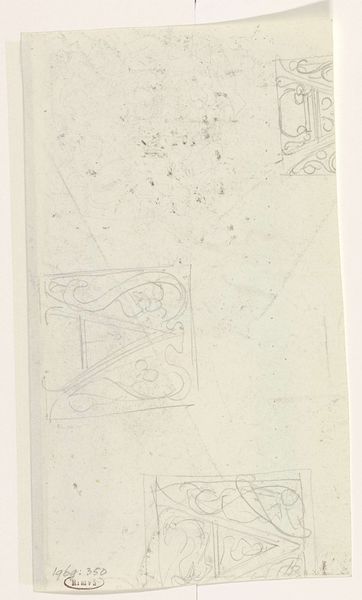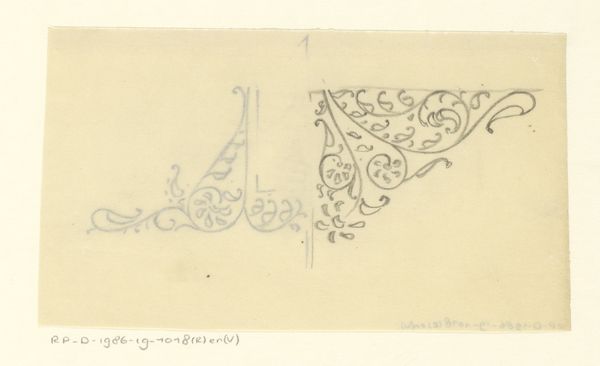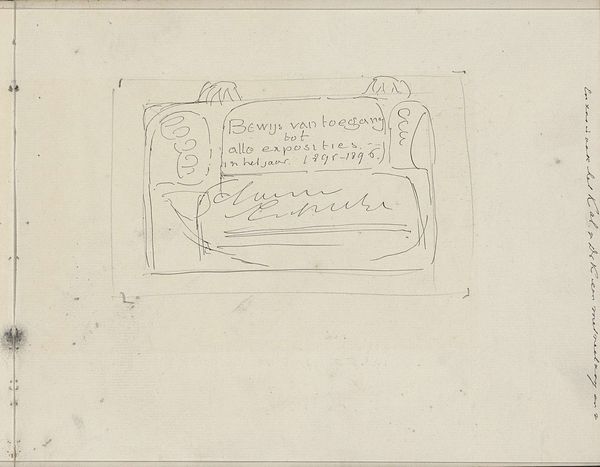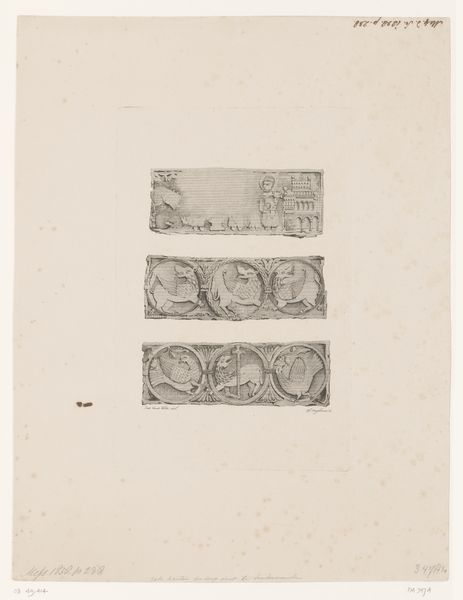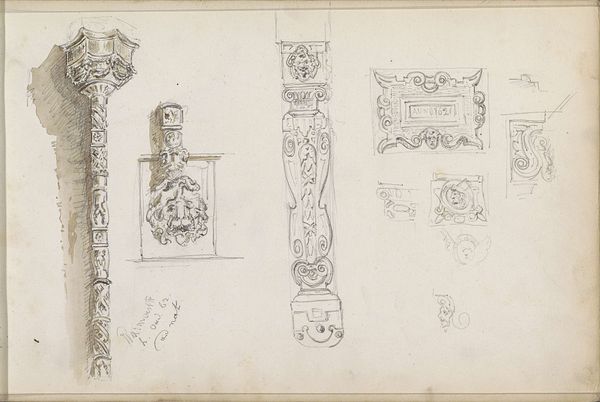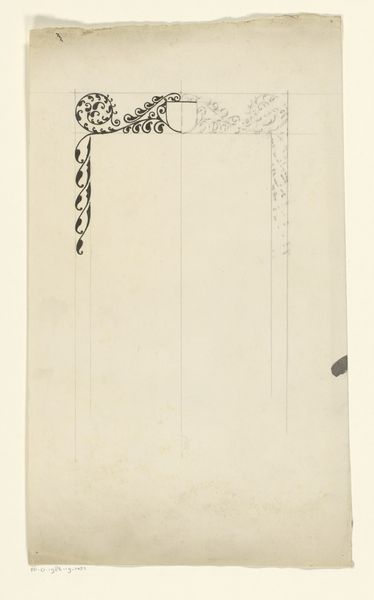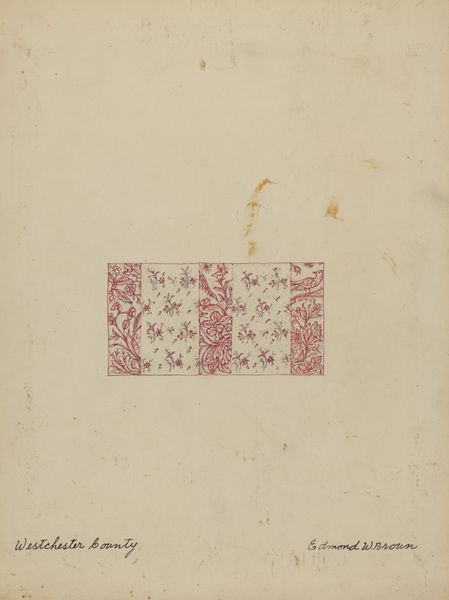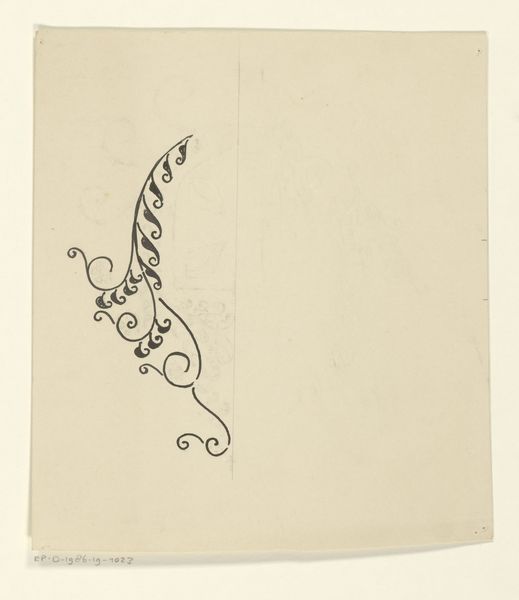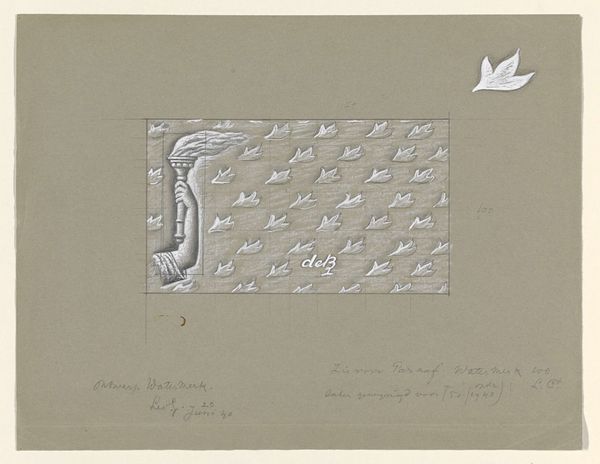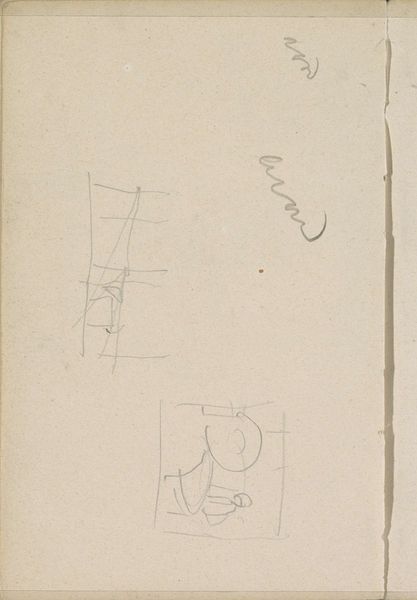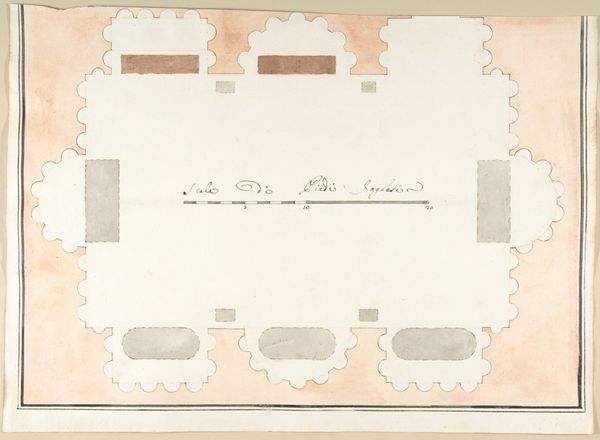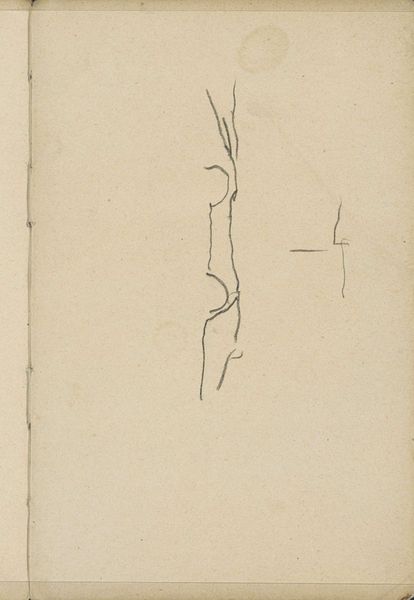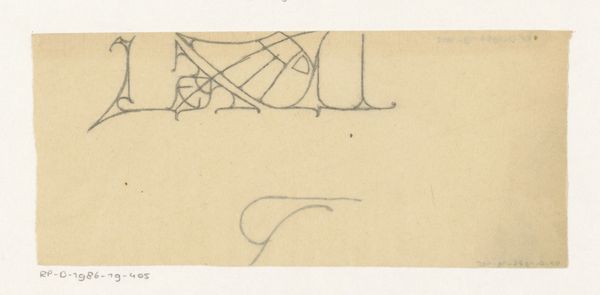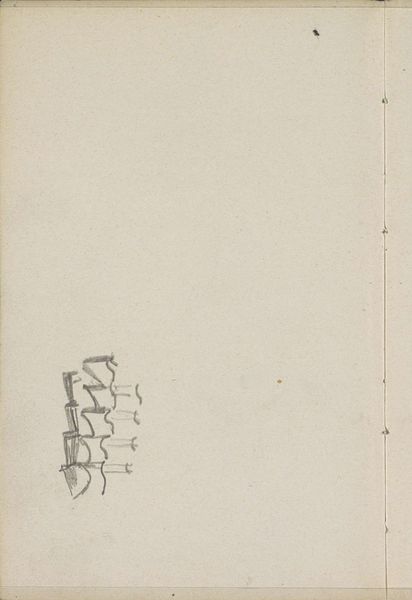
Twee armbanden, gedecoreerd met putti rijdend op een hond en een geit c. 1610
0:00
0:00
print, metal, engraving
#
portrait
#
baroque
# print
#
metal
#
old engraving style
#
engraving
Dimensions: height 102 mm, width 81 mm
Copyright: Rijks Museum: Open Domain
Editor: We’re looking at "Two Bracelets, Decorated with Putti Riding a Dog and a Goat," an engraving by Abraham van den Hecken from around 1610. It’s interesting because it seems to depict these lavish bracelets, but there's also a slightly unsettling element to seeing cherubic figures dominating animals like that. How do you interpret this work? Curator: The contrast you highlight is key. Think about the power dynamics represented here. These bracelets, designed for the elite, feature putti – symbols of innocence and divine love – dominating animals. How does this imagery speak to the societal hierarchies of the time? Editor: Well, it feels like a visual assertion of control, almost a playful depiction of domination, but with these innocent figures at the helm. Is that linked to social power? Curator: Absolutely. The aristocracy of the Baroque period loved displaying their dominion, not just over nature but also over perceived social inferiors. Animals become allegorical here, right? Dog representing fidelity, and a goat possibly virility or even base desires – now steered by the divine right to rule. Editor: So, what appears ornamental becomes a coded statement about social order. It makes me consider how even jewelry can be read as a form of political expression, especially amongst the elite. Curator: Precisely! Art, even in its smallest forms, actively participates in upholding particular societal values. Questioning what such artifacts do rather than simply what they depict can teach us volumes about cultural histories. Editor: That’s fascinating; it really shifts how I view these kinds of decorative pieces. Now I can't see jewelry in the same way, I’ll consider the narrative it puts forth. Curator: It’s a lens shift I encourage, analyzing jewelry from a feminist perspective makes one consider questions of power and how objects communicate this. Keep looking closely.
Comments
No comments
Be the first to comment and join the conversation on the ultimate creative platform.
